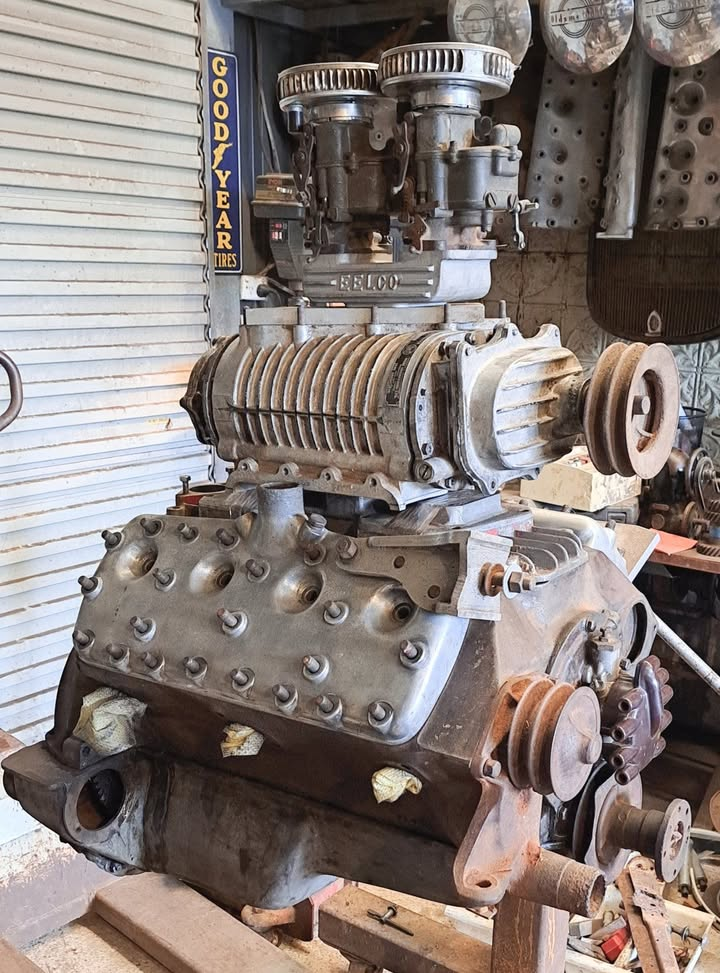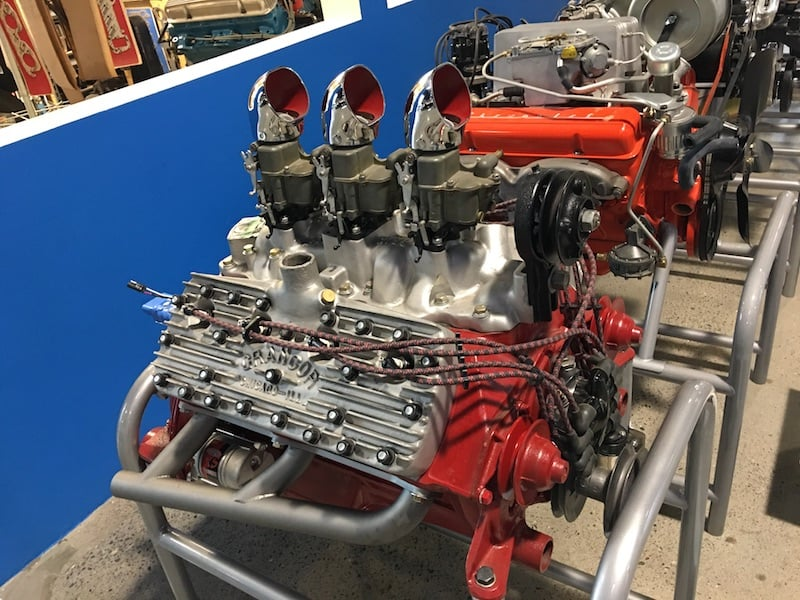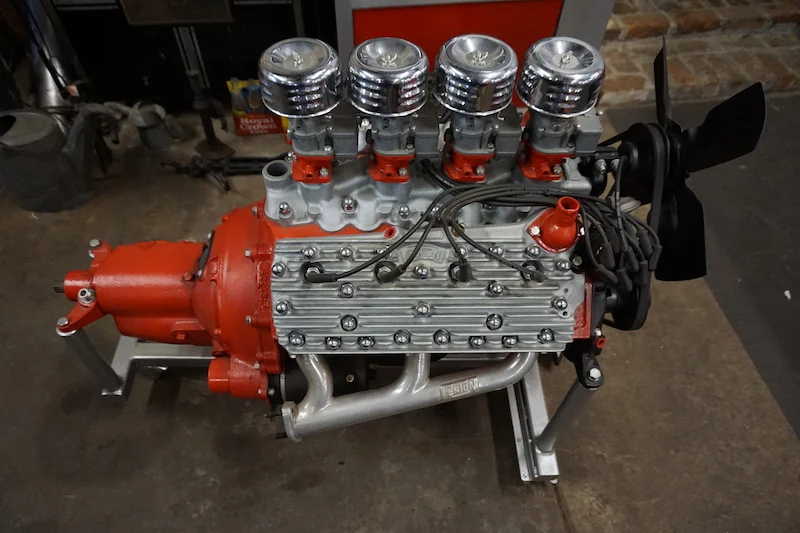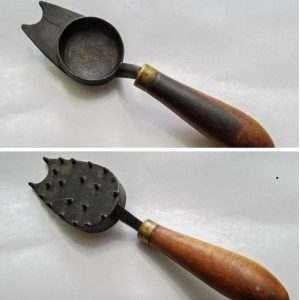The roar of an engine, the sleek lines of a vintage car, and the unmistakable hum of classic American muscle—all of these elements have left an indelible mark on car enthusiasts for decades. But there’s one engine that truly defined an era, captivating a whole generation with its raw power and unforgettable sound. Can you guess which engine became a symbol of speed, strength, and the open road?
It’s none other than the Ford Flathead V8, an engineering marvel that transformed the automotive world from the 1930s through the 1950s. This legendary engine not only powered countless vehicles but also became an iconic part of American hot rod culture. Let’s dive into the story of this remarkable engine and understand why it still resonates with car lovers today.

Why the Ford Flathead V8 Was a Game Changer
In the early 1930s, when most vehicles relied on four-cylinder engines, Ford introduced something revolutionary—the Flathead V8. At a time when power and performance were rare luxuries, this engine brought something entirely new to the market.
The engine’s flat cylinder head design, featuring spark plugs inserted directly from the top, was unlike anything seen before. This configuration not only improved airflow but also made the engine more compact and efficient. It was an engineering feat that transformed the way people viewed car engines.
What truly set the Flathead V8 apart was its accessibility. Priced affordably and designed with simplicity in mind, this engine made V8 power available to the average American. It was easy to maintain and modify, making it the go-to choice for those who loved working on their cars.
VIDEO: Ford flat head V8
The Heart of Hot Rod Culture
By the 1940s and 1950s, the Flathead V8 had become the heart and soul of hot rod culture. In places like California, where car customization was booming, enthusiasts quickly realized the potential of this powerful engine. It became synonymous with rebellion, freedom, and the thrill of speed.
Hot rodders loved the Flathead V8 because it was easy to modify. Adding aftermarket parts, like dual carburetors or a Roots-type supercharger, significantly boosted performance. These modifications not only enhanced speed but also gave the engine an unmistakable growl—a sound that became iconic in American car culture.
The Flathead V8-powered hot rods became legends on the streets and drag strips, embodying a rebellious spirit and a love for pure, unbridled speed. It wasn’t just an engine; it was a lifestyle choice, representing a break from the mundane and a push toward individuality and excitement.
The Magic of the Roots-Type Supercharger

One of the most exciting additions to the Flathead V8 was the Roots-type supercharger. This device, mounted on top of the engine, forced more air into the combustion chamber, delivering a powerful boost to horsepower. It transformed the Flathead V8 from a sturdy performer into an outright beast.
The Roots-type supercharger was often branded as “BELCO,” a name that became synonymous with high performance. It allowed the engine to reach speeds previously thought unattainable, giving hot rodders the edge they craved. The unmistakable growl from a supercharged Flathead V8 became the soundtrack of American muscle.
The Role of Dual Carburetors in Performance Enhancement
To maximize the power of the Flathead V8, car enthusiasts often installed dual carburetors. These components helped optimize the fuel-air mixture, essential for high-speed performance. Positioned on top of the engine, the dual carburetors worked in harmony with the supercharger, pushing the limits of the Flathead V8’s capability.
The combination of flat cylinder heads, dual carburetors, and a supercharger made the Flathead V8 a formidable force on the road. Racers and car aficionados cherished this setup for its balance of power and simplicity, proving that you didn’t need a complicated engine to achieve remarkable speed.
A Mechanical Marvel That Still Inspires

Even after its heyday, the Ford Flathead V8 remains a favorite among vintage car collectors and restoration enthusiasts. Its retro mechanical beauty is not just about performance but also about the aesthetic appeal of its exposed carburetors and the signature shape of its flathead design.
The Flathead V8 is a living piece of history, reminding us of a time when innovation and craftsmanship ruled the automotive industry. It’s not just an engine—it’s a symbol of American ingenuity, representing a period when anyone could feel the thrill of speed without breaking the bank.
The Enduring Legacy of the Ford Flathead V8
Decades have passed since the Flathead V8 ruled the streets, but its legacy lives on. It’s a testament to how one engine can change the world of cars, influencing generations of hot rodders, racers, and car builders. The unmistakable roar of a Flathead V8 still sends chills down the spine of anyone who hears it.
From its early days powering simple Fords to its transformation into a hot rod legend, the Flathead V8 has left an indelible mark on American car culture. Today, whether restored or left in its raw, weathered glory, these engines continue to attract admiration and respect from car enthusiasts around the world.
Conclusion: A Roar That Echoes Through Time
VIDEO: V8 Ford Flathead trike
The Ford Flathead V8 is more than just a piece of machinery—it’s a legend. It’s the engine that made speed and power accessible, creating a legacy that still resonates in the automotive community. Even as technology has evolved, nothing quite matches the simple yet powerful design of the Flathead V8.
Its roar is more than just noise—it’s the sound of history, passion, and the unending love for American muscle. Whether you’re behind the wheel of a restored classic or just reminiscing about the golden era of hot rods, the spirit of the Flathead V8 lives on, a timeless beast that refuses to be forgotten.


